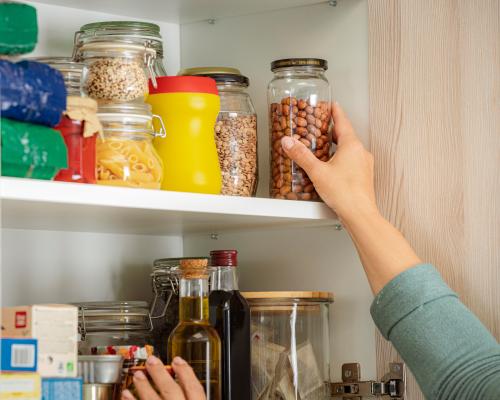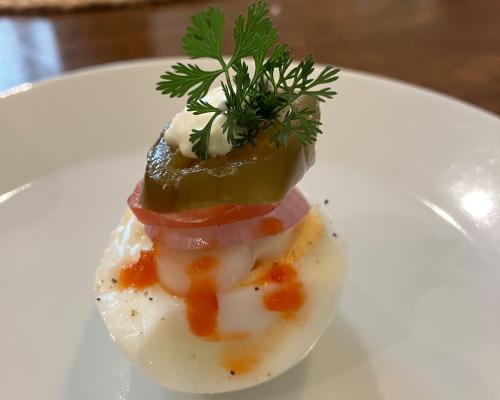
A decade ago I put together a Running Away from Home Cookbook as a gentle nudge to one of my millennial chicks. Too gentle as it turned out – 10 years later I was the one who left home. After a lifetime of cooking for the multitudes, I have adapted to cooking for one. It’s been both a relief and a revelation.
Single householders aged 65 and over are increasing as a proportion of the population. I am one of that large cohort.
Whatever the circumstances, people living solo – whether alone or in a share house – can eat well and inexpensively. By making the most of whatever pantry, fridge and freezer space is at your disposal, you can prepare something nutritious and delicious.
Limited bench, cooktop and oven space can still produce the best kind of fast food. The fewer ingredients and steps, the less kitchen real estate and hardware required.
What follows are cook-to-survive recipes, with pantry items that speed up the process, such as ready-to-use minced ginger, crushed garlic and microwaveable rice. Pick and choose accordingly.
-
Sign up for the fun stuff with our rundown of must-reads, pop culture and tips for the weekend, every Saturday morning
Pantry essentials
-
Oil
-
Olives
-
Good quality anchovies
-
Vinegar
-
Tinned tomatoes
-
Coconut cream
-
Tinned tuna
-
Chickpeas
-
Dukkah
-
Pasta, noodles and rice
Olive oil is the oil of choice if pasta is your go-to cupboard meal. Light olive oil has a higher smoke point than extra virgin olive oil and can be used in cooking and for dressings. Nut and sesame oils have a more limited shelf life and are generally used in smaller quantities, so buy small and check the use-by date regularly.
The oil from marinated olives or cheeses can be used to make Swedish crispbread, in dressings or drizzled over roasted vegetables for antipasto. Good quality anchovies are more subtle in taste than their less expensive cousins and are the foundation for an excellent pasta sauce when mixed with oil, lemon, garlic, rosemary and any other fresh herbs. Add them as a tuna alternative to leftover steamed or baked potatoes, tomatoes (chopped or cherry), boiled eggs, black olives, green beans and capsicums with a drizzle of oil and vinegar for a delicious salade niçoise. If tinned, in glass or in a vacuum-sealed pack, any leftover anchovies can be divided up and frozen in usable quantities.
Balsamic vinegar can be used on its own or combined with oil to dress salads and roast vegetables. Rice wine vinegar is used extensively in Asian cooking, and can be used at a pinch as a substitute for white, white wine and apple cider vinegars.
Tinned chickpeas and diced or pureed tomatoes are great for soups and curries. Any leftover tomato can be microwaved (lid on) in five-minute bursts to reduce and thicken to make a great pizza base either on its own or combined with fresh herbs or pesto.
Dukkah, a spicy mix of cumin, coriander, almonds and sesame seeds, is an essential weapon in my cooking armoury. Try dipping some good bread first in a pot of good olive oil, then in a pot of dukkah. Or split round pita bread in half, brush or spray with olive oil and sprinkle dukkah generously over the top, then bake in a 180C oven until golden brown and crispy. Serve warm or allow to cool and seal in an airtight container. It will last for up to a week.
I use coconut cream powder as a space-efficient alternative to the tinned version. When mixed with water, or the hot liquid from whatever you’re cooking, it doubles as a thickener so you get all the coconut flavour you want without watering down the sauce.
Pasta, noodles and rice are must-have items in my pantry. I prefer the old-fashioned environment-friendly absorption method of cooking rice but have been known to keep a pouch or two of microwaveable rice handy for emergencies.
Fridge essentials
-
Minced ginger
-
Roasted garlic
-
Parmesan, grated or block
-
Pesto
-
Mayonnaise
-
Stir-fry sauce
To my taste buds, commercial minced ginger is an acceptable substitute for fresh and I love the added zing it gives a stir-fry. For those who don’t like the taste of commercial crushed garlic in a jar, roasted garlic is a delicious alternative that will keep for weeks in a sealed container in the fridge and can be squeezed out of their cloves as required. Whenever the oven is on, I throw in a whole garlic or two and leave it there for 45 minutes to an hour, or until the garlic cloves are soft and squishy.
I’m a fan of freshly grated parmesan, but for the time poor, you can’t beat pre-grated commercial parmesan. A block can last for weeks if kept in sealed plastic in the fridge. I still haven’t found a commercial pesto that doesn’t have an unpleasant aftertaste so I make my own. I either bottle it in small jars and seal each with a top layer of oil to make it airtight, or freeze it in ice cube trays. With a space saving mincing wand and any old combination of basil, garlic, toasted pine nuts, and olive oil (with or without parmesan) a world of lightning-fast meals-for-one opens up to you. Try these pesto baked eggs for one.
Give me a good quality store bought mayonnaise and I’ll show you a short cut to happiness. Mix it with boiled eggs and a really good curry mix and lather it on excellent bread, with or without rocket. Or add some of that roasted garlic and serve it as aioli with leftover meat, seafood, roast vegetables, boiled eggs.
Nagi Maehashi’s all-purpose stir-fry sauce is an absolute winner. It can be used in place of the chilli oil and sauce in Justin Tsang’s chilli oil udon and it can also be frozen into ice cube containers.
Freezer essentials
-
Homemade stock
-
Frozen peas
-
Lemon and lime juice ice cubes
-
Pizza bases
Whenever you cook a roast chicken, you have the potential for any number of soups, risottos and sauces. I keep leftover bones and skin in a sealed plastic bag in the fridge or freezer until I’m at home for the four hours it takes to turn them into stock. Add enough salted water to a pot to just cover them, add leftover carrot, celery and onion ends and simmer them – lid off – until the mixture reduces by half or until it reaches your preferred flavour intensity.
Frozen peas can be thrown into the pasta pot for the final two minutes of cooking time. Drain then add a good dollop of oil and some pesto and grated parmesan from your fridge or freezer.
A squeeze of lemon or lime is an essential feature of many pasta, noodle or salad dishes, so having frozen cubes of juice is handy for when you don’t want to slice into a whole fruit. If you have a pizza base, some pesto, reduced tomato puree and mozzarella is all you need for a delicious margherita. Try adding leftover ham, salami, olives or, if you fancy it, tandoori chicken slices for a truly delicious fast meal.







